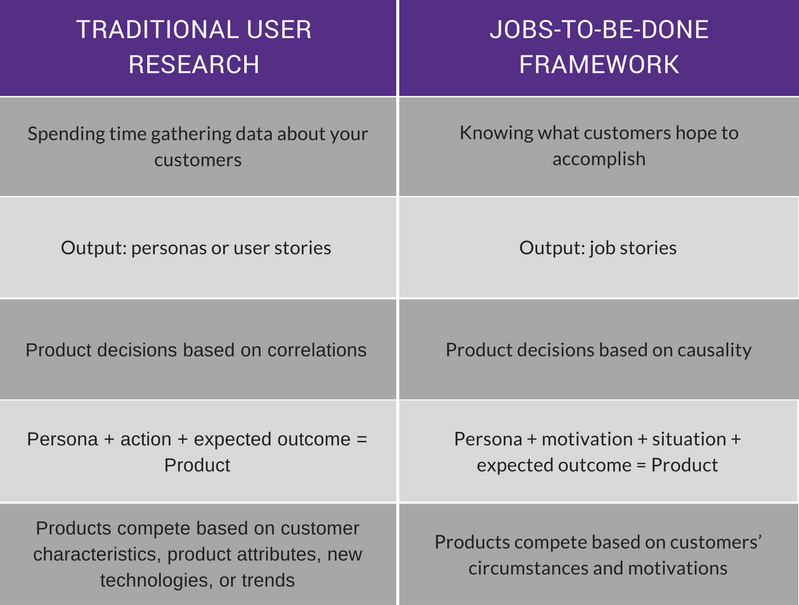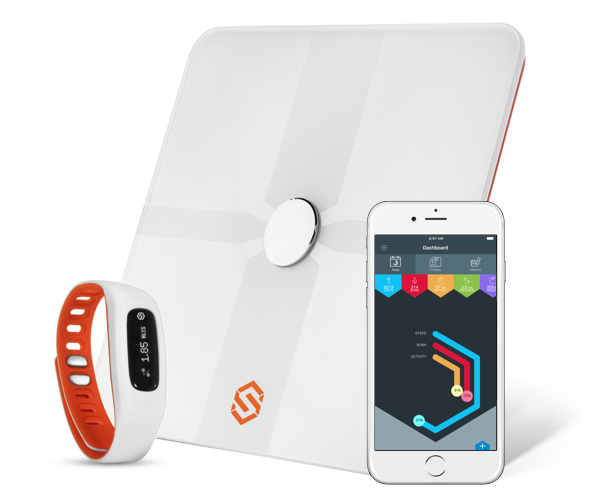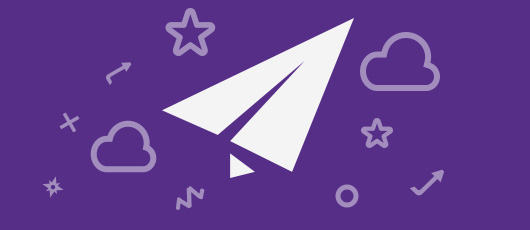A device that lets you “smell the Internet” via the websites you visit. A mobile app that lets you see and react to your Facebook newsfeed stories right on your phone’s home screen. Sound like good ideas right?
The truth is: DigiScents’ iSmell and Facebook’s Home are considered two of the biggest product flops in the last few decades. It’s not that the products weren’t technologically good, or had inadequate financial support. It’s because there was little consideration to the user needs.
Introducing Jobs to Be Done
Now imagine yourself in this scenario: You are embarking on a new product development journey for a physical or software solution.
(Optional steps: You conduct a market/persona research to confirm your hunch that “this would work.” Some focus group participants even give you what seems to be valuable insight into the features they want.)
You’re so sure this is going to be a successful launch that the production phase seems like a tiny final hurdle.
Then comes the hard truth. One of these can happen:
- You fail to reap commercial success and burn your budget
- You fail to attract funding after building a prototype
Even if you have had adequate support in other areas, e.g. marketing, sales, management, what you miss is the answer to this one critical question: “What are your potential customers trying to achieve?” (Or “What are their jobs to be done?”)
Basic Tenets of Jobs to Be Done
This framework is popularised by Harvard Business School Professor - Clayton Christensen and has been around for nearly 30 years. However, it is just another of his concepts that is prone to misunderstanding, just as Disruptive Innovation (which we have discussed in this blog post).
One of the most common misunderstandings people have about Jobs-to-be-done is that it does not really differ from the established user research methods.
We attempt to give you a broad comparison between the two approaches in the table below.
 How Jobs-to-be-done differs from established user research
How Jobs-to-be-done differs from established user research
As you can see, Jobs-to-be-done goes further by allowing you to step into your customer’s shoes and work backwards to a solution. This will help increase the success rate of your product innovation.
Not just about functions
Jobs-to-be-done not only uncovers functional benefits but also emotional and social aspects.
For instance, people might “hire” Facebook for the functional job of connecting with those across different geographies; the emotional job of being able to feel less lonely; the social job of being seen in favourable light.
We don’t make purchase decisions purely based on features or functions. A lot of marketing/advertising has been designed to tug at our heartstrings, or appeal to our nature as social creatures. So why would you not include those jobs in your analysis?
Know the real competitors
With the Jobs-to-be-done framework, you might identify competition in places you’ve never thought of before.
Consider competition in the following scenarios:
- To do the same job, in the same manner, e.g. iPhone vs. Samsung smartphone
- To do the same job, in a different manner, e.g. earphones vs. stereo speakers
- To do two conflicting jobs, e.g. credit cards vs. savings accounts
Spot the real opportunities (Non-consumption)
This notion is closely related to Disruptive Innovation; in a sense that customers are not consuming existing products, because they are either too complex or expensive for the job to be done.
For instance, online learning has proliferated due to the non-consumption of traditional university courses. Two market segments exhibit this. One is people who think university degrees offer much more than they need. The other is those who can’t afford the expensive courses.
Hence, online learning has disrupted traditional higher education offerings by making education more accessible to those who are not consuming the latter.
We also wrote about this digital disruption to traditional universities in more details.
Jobs can evolve over time
Jobs are not hard-and-fast rules. As a product is used, the existing job might expand, or customers may discover it solves other jobs they have never needed solving before.
Facebook’s original job was to connect fellow students at Harvard University. Now, Facebook is a tool people use to broadcast their own social standing or emotional conditions to their group of contacts.
Additional resource
Karen Dillon, the co-author of the latest book on Jobs to Be Done with Clayton Christensen, shares some excellent strategies for utilising the framework to build successful products.
Check out this episode from the podcast This is Product Management.
Applying Jobs to Predict Success of Innovations
To put things into perspective, let’s look at some relatively new innovations available on the market as examples.
The “job” of this exercise is to get you to think about Jobs-to-be-done and possibly inspire you for your next product launch. Of course, it’s not meant to be a comprehensive analysis but enough to cover the main points.
1. Fitness wearable and supplements combo
What is it?
Made by STYR Labs, the combo consists of:
- An activity tracker (users can also use other trackers such as FitBit, JawBone if they already own one)
- A mobile app that analyses data from the activity tracker and recommends personalised nutritional supplements
- A wireless scale that measures other stats such as body fat percentage and bone mass
- Customised multivitamins delivered to your door
 Source: STYR Labs
Source: STYR Labs
The jobs to be done
Individually each of the components could be used to accomplish different jobs but since we want to uncover the rationale behind the STYR combo, let’s consider it as a whole.
- Functional: linking users’ nutritional intake with fitness tracking, allowing them to know they are taking their supplement with intention, tailored to their specific needs.
- Emotional: peace of mind from self-monitoring and personalised supplements, that they are getting enough of the nutrients they need and not too much of those they do not.
- Social: being seen as healthy; saving time to engage in more social activities
Non-consumption
Potential users could be people who want personalised health and diet advice/monitoring without having to fork out a lot of money for dieticians or personal trainers.
Another non-consumption market could be health-conscious people who find the process of analysing their nutritional requirements, buying and keeping track of supplements intake too complex.
Verdict
We think overall it’s an innovative product that attempts to provide that missing link in the health wearables market. It could well be the case that the real revenue would come from personalised supplements rather than the hardware.
With the Jobs-to-be-done framework, you might identify competition in places you’ve never thought of before.
2. Peer-to-peer platform for buying things around the world
What is it?
Grabr is a peer-to-peer shopping and delivery platform. It connects users seeking unique items around the world with travellers heading their way. Buyers post requests for items and choose how much they pay based on bids of travellers. Grabr earns money on each transaction with a service fee charged to the buyers.
The start-up has secured a $3.5 million seed investment and has attracted over 50,000 users in around a year of operation.
 Source: Grabr
Source: Grabr
The jobs to be done
Functional
- For buyers: can finally get rare finds or items that are impossible to buy where you live
- For travellers: make use of spare luggage allowance while earning extra money
Emotional
- For buyers: sentiments from getting items you’ve always longed for
- For travellers: helping other people
Social: Break down barriers between countries, meet locals from different cultures
Non-consumption
People who find the process of hunting for rare, unique items on the existing channels too complex: local forums (e.g. Gumtree), personal network of friends and families, social media, eBay.
Or it could be impossible for people to get the job done. For instance, you can’t search online for items outside the digital environment altogether, e.g. antiques. Another example is legal restrictions that prevent overseas art buyers from getting what they want directly. But they can have someone in the country of origin buy the artwork and bring it over.
Verdict
The platform has a lot of potential. It has the different flavours of a successful platform such as: crowdsourcing, community building, “me-tailing”.
We also wrote about platform as a business model and its flavours in another blog post.
There is a very compelling job story behind Grabr which stems from a unique situational factor (Remember the formula Persona + motivation + situation + expected outcome = Product ?)
Nonetheless, safety and legal issues such as smuggling might become obstacles to growth, often due to the nature of a peer-to-peer platform. If Grabr could safeguard their business like Airbnb and Uber, they stand a good chance of becoming a disruptive force.
*Disclaimer: We’re not affiliated, endorsed by or in any way connected with the products mentioned here.

